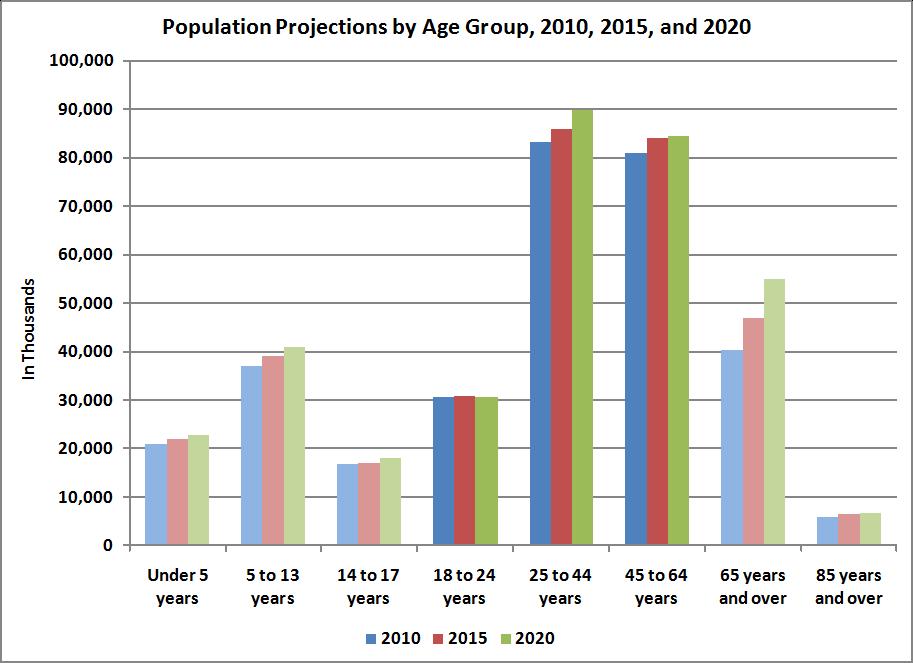Is Age Just A Number? Exploring The Societal Impact Of Age

Table of Contents
Ageism in the Workplace: A Persistent Challenge
Discrimination Based on Age
Age discrimination in the workplace remains a persistent challenge. Many older workers face prejudice in hiring, promotions, and salary negotiations. Studies consistently show that older applicants are often overlooked in favor of younger candidates, even when possessing superior skills and experience. This ageism translates to significant financial insecurity for older workers who may struggle to find new employment after job loss or face reduced earning potential throughout their careers.
- Examples of ageist practices: Job descriptions using ageist language (e.g., "recent graduate preferred"), unjustified questioning about retirement plans during interviews, and a preference for younger employees perceived as more "adaptable."
- Legal protections against age discrimination: Laws like the Age Discrimination in Employment Act (ADEA) in the US aim to protect older workers, but enforcement remains a challenge.
- Impact on older workers’ financial security: Age discrimination often leads to lower lifetime earnings, reduced savings, and a greater reliance on social security or pensions, impacting their overall financial well-being.
The Value of Experience and Wisdom
Despite ageist biases, older workers bring invaluable experience, wisdom, and a strong work ethic to the table. Their years of accumulated knowledge and honed skills are often unmatched by younger employees. Moreover, their mentorship capabilities significantly benefit younger team members. Creating age-inclusive workplaces benefits both the individual employees and the organization as a whole.
- Specific skills and knowledge possessed by older workers: Deep industry expertise, problem-solving skills honed over decades, strong work ethic, and established professional networks.
- The importance of intergenerational collaboration: Pairing experienced older workers with energetic younger colleagues fosters knowledge transfer, boosts morale, and leads to more creative and effective problem-solving.
- Strategies for creating age-inclusive workplaces: Blind resume screening, skills-based assessments, mentorship programs, and flexible work arrangements.
Healthcare and Aging: Addressing the Needs of an Aging Population
Access to Healthcare and Age-Related Diseases
As populations age globally, access to affordable and high-quality healthcare becomes increasingly crucial. Older adults often face unique challenges, including higher rates of chronic age-related diseases and conditions. These health issues, coupled with rising healthcare costs, create significant hurdles in accessing the necessary care.
- The rising costs of healthcare: The cost of managing chronic illnesses like diabetes, heart disease, and arthritis significantly impacts the financial stability of older adults.
- Disparities in healthcare access based on age and socioeconomic status: Older adults with lower incomes may face greater difficulties in affording healthcare, leading to disparities in health outcomes.
- Advancements in geriatric care: Improvements in geriatric medicine and supportive care services are vital for improving the quality of life for older adults and managing age-related conditions effectively.
The Importance of Age-Friendly Healthcare Systems
Developing age-friendly healthcare systems is crucial for addressing the specific needs of an aging population. These systems focus on providing accessible, patient-centered care that is tailored to the physical and cognitive changes associated with aging. This involves employing technology to improve access and streamline processes while also fostering a supportive and understanding healthcare environment.
- Examples of age-friendly initiatives: Home healthcare services, telehealth options, easy-to-navigate healthcare websites, and clear communication strategies.
- The role of technology in improving healthcare for older adults: Telemedicine, wearable health trackers, and digital health records can enhance access to care and improve monitoring of chronic conditions.
- Promoting healthy aging: Preventive health measures, healthy lifestyle choices, and regular health check-ups play a critical role in maintaining physical and mental well-being during the aging process.
Social Perceptions and Age: Breaking Down Stereotypes
Societal Stereotypes and Ageist Attitudes
Negative stereotypes about aging are pervasive in society, significantly impacting the self-esteem and social integration of older adults. These ageist attitudes often portray older people as frail, incompetent, or irrelevant, leading to social exclusion and discrimination.
- Examples of harmful ageist stereotypes: The portrayal of older adults as grumpy, forgetful, or technologically inept.
- How media perpetuates ageist attitudes: The underrepresentation of older adults in media or their depiction in stereotypical roles perpetuates negative biases.
- Strategies to combat negative stereotypes: Promoting positive media representations of older adults, challenging ageist jokes and comments, and celebrating the contributions of older people in society.
Celebrating the Diversity of Aging
Aging is a diverse process, with individuals experiencing it in unique ways. While physical changes are inevitable, the aging process also brings increased wisdom, life experience, and unique contributions to society. Focusing on the positive aspects of aging fosters a more inclusive and supportive society.
- Examples of successful older adults: Highlighting the achievements and contributions of older adults in various fields can challenge negative stereotypes.
- The importance of intergenerational relationships: Connecting people of different ages strengthens community bonds, fosters mutual respect, and facilitates knowledge sharing.
- Promoting a positive view of aging: Encouraging active aging, lifelong learning, and social engagement helps older adults maintain their well-being and contribute meaningfully to society.
Conclusion
The question, "Is age just a number?" reveals a complex reality. While age is undeniably a numerical value, its societal impact is significantly shaped by our attitudes, perceptions, and policies. Ageism in the workplace, healthcare disparities, and pervasive negative stereotypes demonstrate the need for significant societal change. However, by highlighting the value of experience, promoting age-friendly environments, and challenging ageist attitudes, we can build a society that truly values the contributions of people at every stage of life. Let's actively challenge the notion that age limits potential and work towards a society that truly values the contributions of people of all ages. Remember, while age is a number, its impact is shaped by our societal attitudes. Let’s work together to make "Is age just a number?" a resounding "yes" for everyone.

Featured Posts
-
 Chris Kaba Panorama Police Watchdog Challenges Bbcs Coverage
Apr 30, 2025
Chris Kaba Panorama Police Watchdog Challenges Bbcs Coverage
Apr 30, 2025 -
 Islensk Fotbolta Dagskra Valur Stefnir A 2 0 Sigur
Apr 30, 2025
Islensk Fotbolta Dagskra Valur Stefnir A 2 0 Sigur
Apr 30, 2025 -
 The Demise Of Anchor Brewing 127 Years Of Brewing In San Francisco Concludes
Apr 30, 2025
The Demise Of Anchor Brewing 127 Years Of Brewing In San Francisco Concludes
Apr 30, 2025 -
 Mail Delivery Problems Louisville Representative Challenges Usps Transparency
Apr 30, 2025
Mail Delivery Problems Louisville Representative Challenges Usps Transparency
Apr 30, 2025 -
 Il 22 Settembre Inizia L Appello Nel Processo Becciu
Apr 30, 2025
Il 22 Settembre Inizia L Appello Nel Processo Becciu
Apr 30, 2025
Latest Posts
-
 Premier Bebe De L Annee Gate Une Boulangerie Normande Offre Son Poids En Chocolat
May 01, 2025
Premier Bebe De L Annee Gate Une Boulangerie Normande Offre Son Poids En Chocolat
May 01, 2025 -
 Zdravkove Prve Ljubavi Prica O Pjesmi Kad Sam Se Vratio
May 01, 2025
Zdravkove Prve Ljubavi Prica O Pjesmi Kad Sam Se Vratio
May 01, 2025 -
 Boulangerie Normande Un Kilo De Chocolat Pour Le Premier Bebe De L Annee
May 01, 2025
Boulangerie Normande Un Kilo De Chocolat Pour Le Premier Bebe De L Annee
May 01, 2025 -
 Key Moments Duponts Masterclass Secures Frances Win Over Italy
May 01, 2025
Key Moments Duponts Masterclass Secures Frances Win Over Italy
May 01, 2025 -
 France Vs Italy Rugby A Detailed Match Report Featuring Dupont
May 01, 2025
France Vs Italy Rugby A Detailed Match Report Featuring Dupont
May 01, 2025
